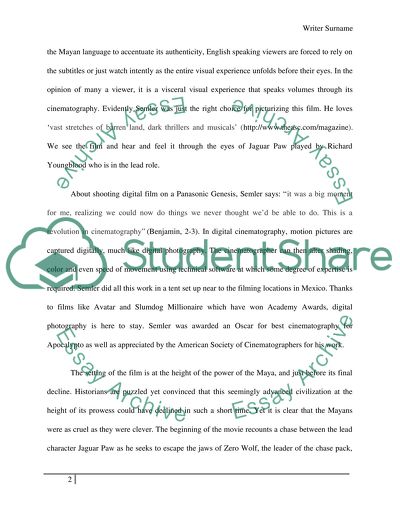Cite this document
(“Cinematography in Apocalypto Essay Example | Topics and Well Written Essays - 1500 words”, n.d.)
Retrieved from https://studentshare.org/visual-arts-film-studies/1578286-digital-cinematography
Retrieved from https://studentshare.org/visual-arts-film-studies/1578286-digital-cinematography
(Cinematography in Apocalypto Essay Example | Topics and Well Written Essays - 1500 Words)
https://studentshare.org/visual-arts-film-studies/1578286-digital-cinematography.
https://studentshare.org/visual-arts-film-studies/1578286-digital-cinematography.
“Cinematography in Apocalypto Essay Example | Topics and Well Written Essays - 1500 Words”, n.d. https://studentshare.org/visual-arts-film-studies/1578286-digital-cinematography.


